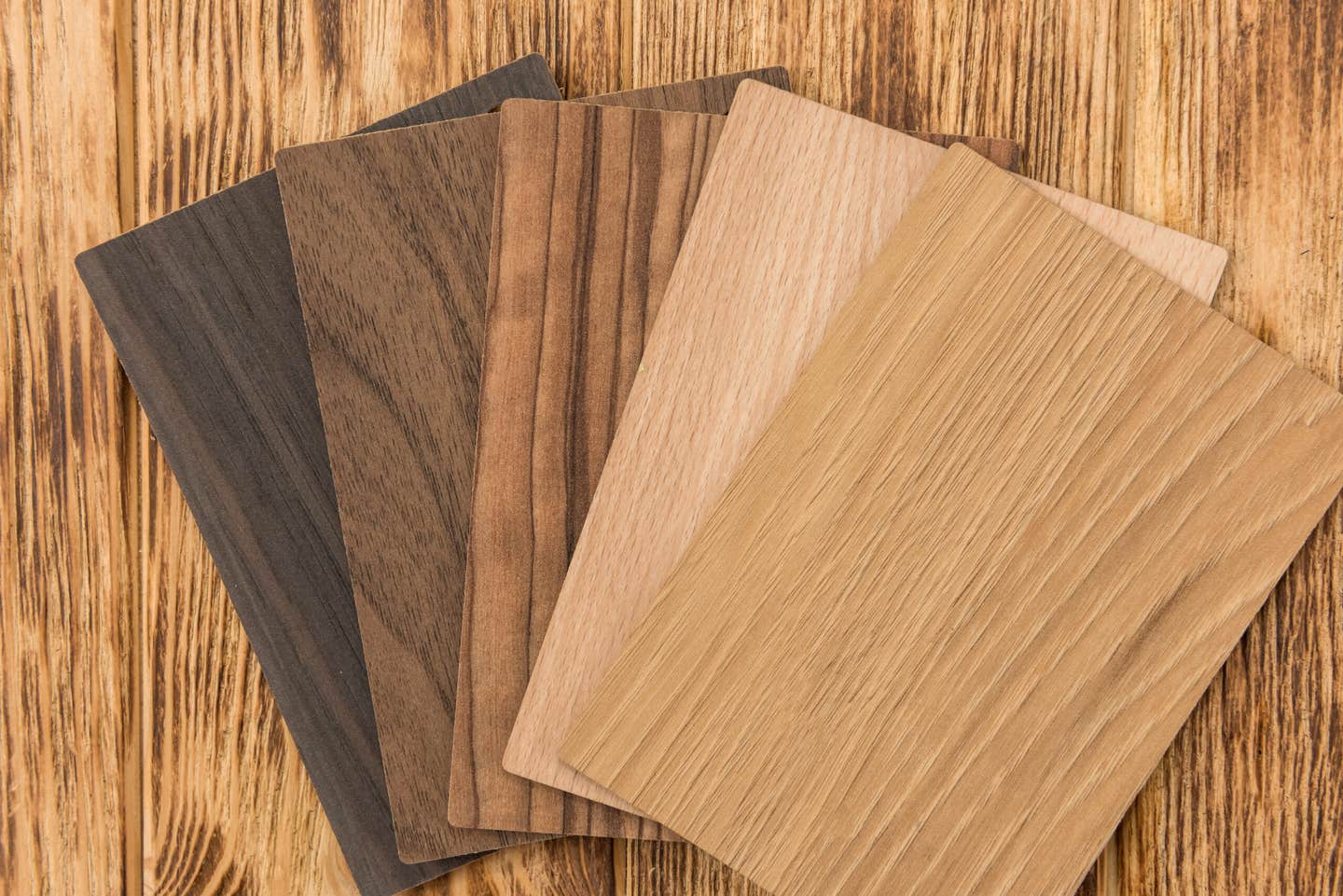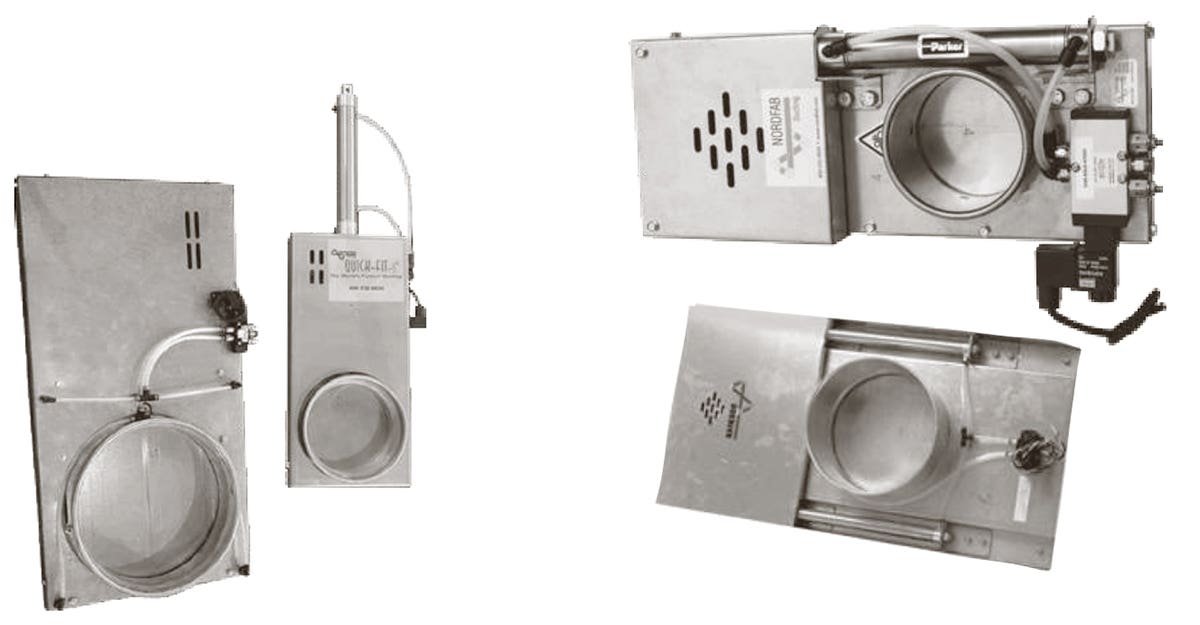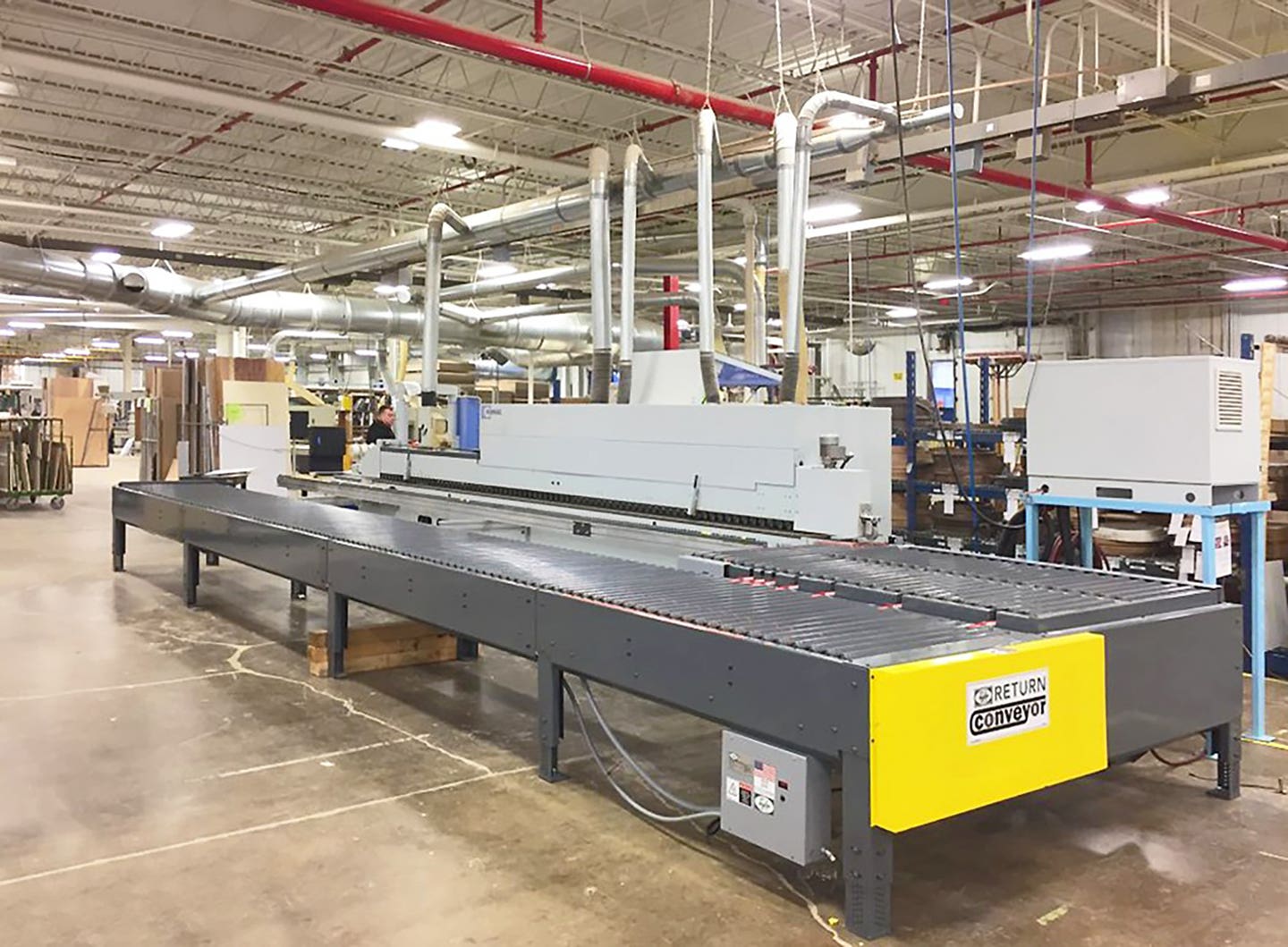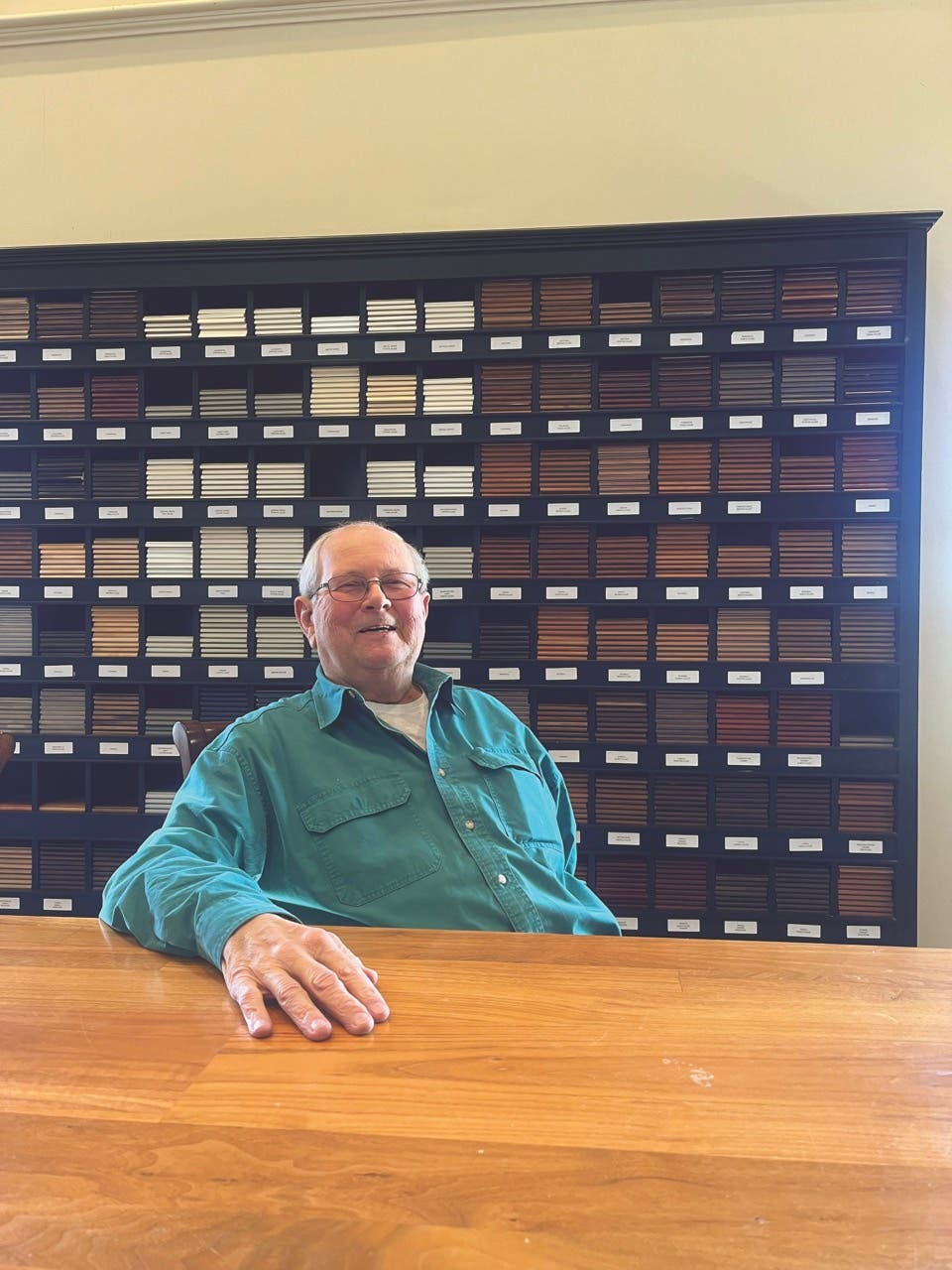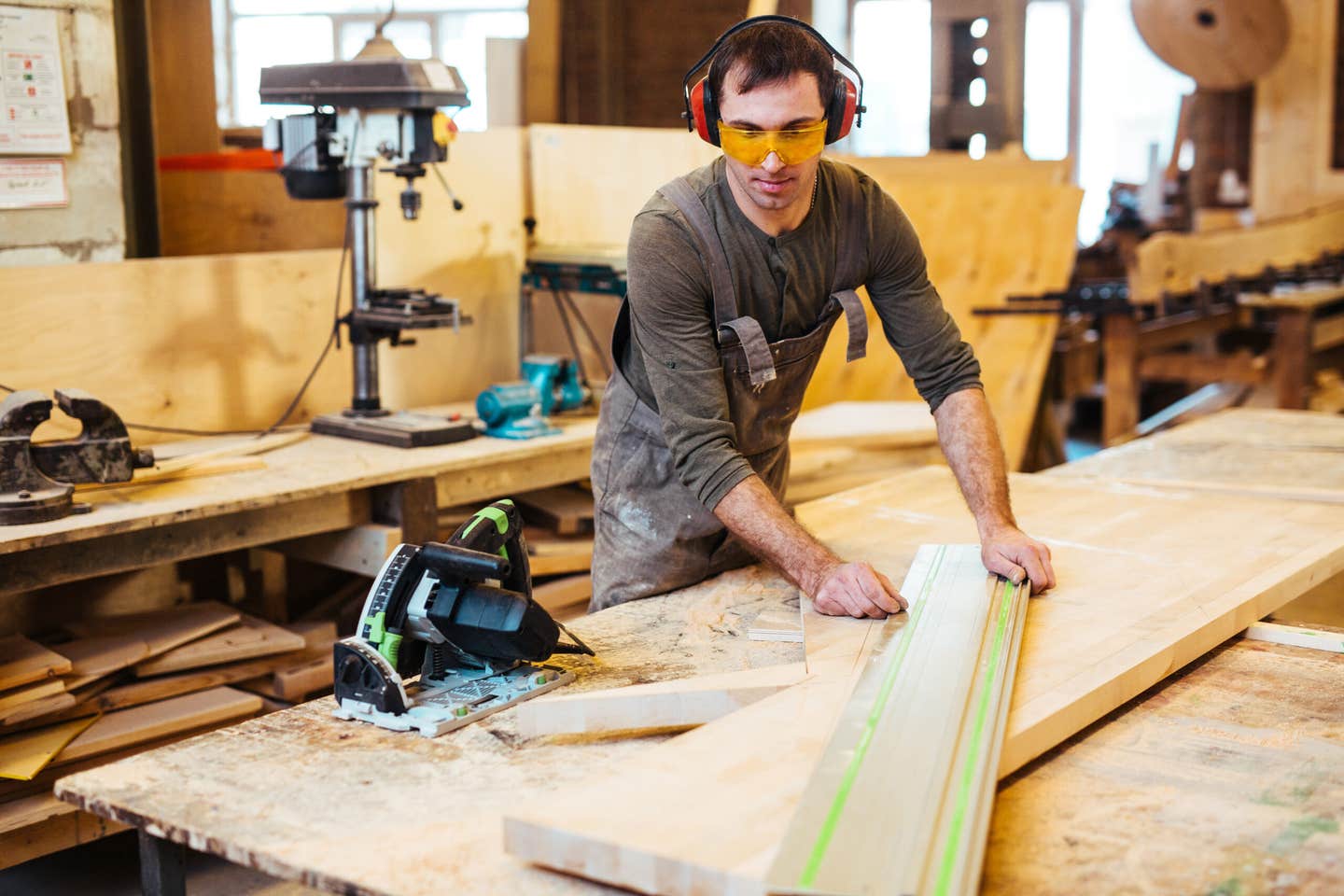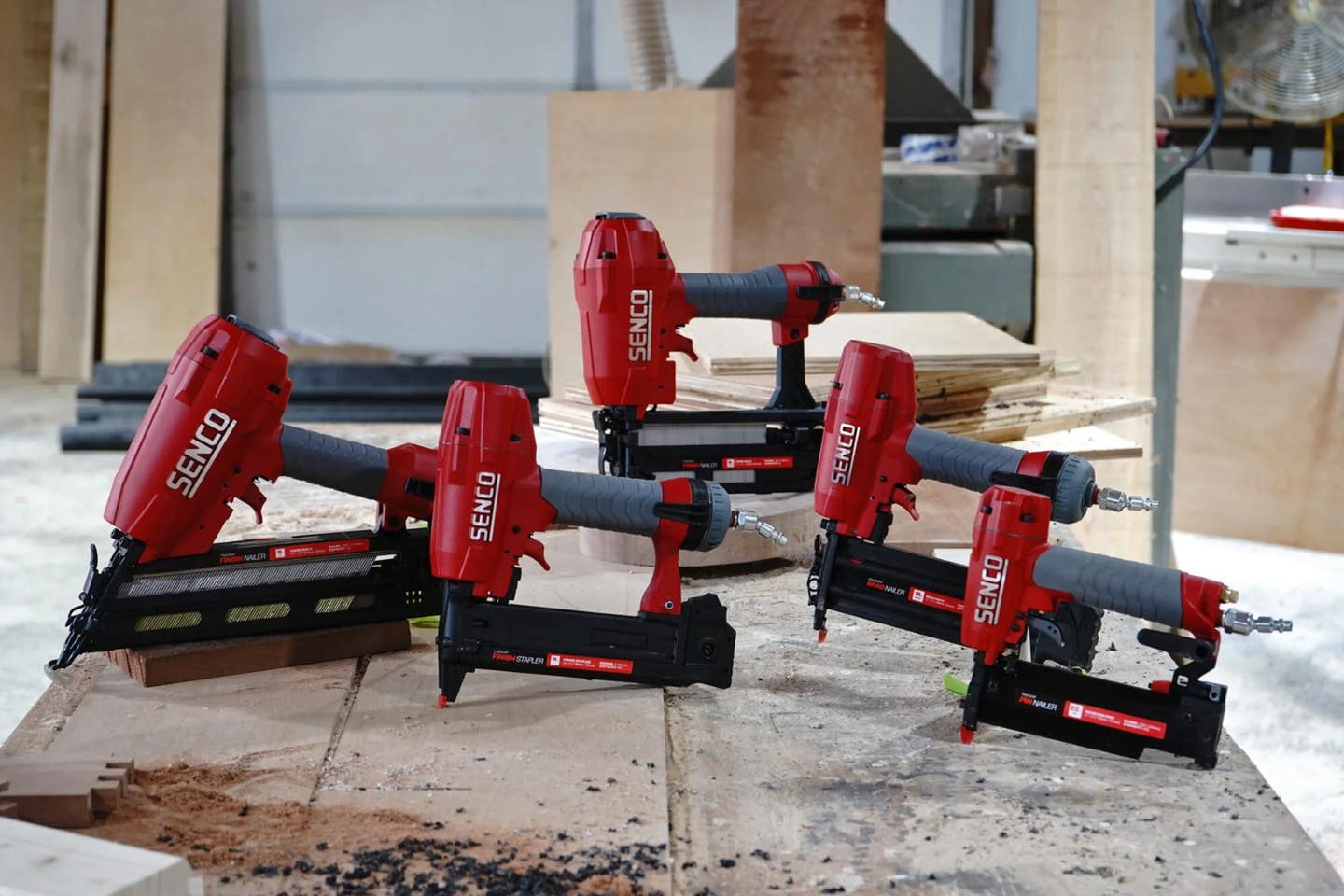Quest for success
Rob Levy is finally able to say he has the custom woodworking business he’s always dreamed of creating. Along with his crew, the owner of Hudson River Woodworks in Garnerville,…
Rob Levy is finally able to say he has the custom woodworking business he’s always dreamed of creating. Along with his crew, the owner of Hudson River Woodworks in Garnerville, N.Y., works with the architectural and design community and homeowners in designing and building custom furniture and fine cabinetry.
He creates entertainment centers, built-ins, library rooms, home offices, kitchens and high-end closets, using a wide variety of domestic and exotic veneers and solid woods.
“I’ve always wanted to have a business very similar to what I have now. Recently, a friend from college came up to visit, took one look at the shop and said, ‘This is exactly what you were talking about in college.’ ”
But it certainly didn’t happen overnight, and the whole process has been a matter of Levy timing things right while working to gain perspective on the industry and bring his personal dream to fruition.
After completing two degrees in fine woodworking and furniture design, Levy chose to step away from creating his own art pieces to work at a prestigious midtown New York City art gallery that specialized in studio art furniture. After that, Levy worked with several firms where he focused on marketing and selling commercial interior custom furniture and millwork to the architectural and design community. These experiences taught him how to build great relationships with the clients that are the lifeblood of his business today.
The beginning
Levy began working at his father’s cabinet shop when he was a teenager. After completing high school in West Nyack, N.Y., he enrolled in a woodworking program at Bucks County Community College in Newtown, Pa., where he obtained an Associate of Fine Arts degree. He studied under Mark Sfirri, a studio furniture maker specializing in lathe turned art furniture, and apprenticed at a custom furniture factory in Philadelphia.
Levy then enrolled at the University of Massachusetts in North Dartmouth, Mass., studying with Alfonse Mattia, Stephen Whittlesey and the late Michael Paschalla, and earned a Bachelor of Fine Arts degree in 1991.
Levy also worked part-time for a furniture refinisher and restoration specialist. When he finished school, he worked and sold in the Peter Joseph Gallery in Manhattan, where he taught patrons about the careers of the furniture makers and other artists, and about specific pieces.
“My years at school taught me how to design and build the furniture, but nothing about the person who buys it, so working at the gallery opened my eyes,” says Levy.
He had his own business, briefly, building custom furniture and cabinetry out of his father’s four-car garage in West Nyack, N.Y. But he put his dream on hold for another four years, taking a job at a high-end architectural millwork shop in Brooklyn, which made conference tables and full-floor build-outs for commercial clients.
In 2004, Levy opened a shop in Garnerville that catered to the residential market. His plan from the beginning was to keep the operation small. Levy rents 3,800-sq.-ft. on the first floor of a 150-year-old dye factory, which includes the shop, showroom and office.
“I learned, from working in the gallery, that I’d have more luck building what [homeowner ’s] need,” says Levy. “Not fine art; but cabinetry. When I was in my father’s garage and my overhead was minimal, I could afford to make custom furniture. But this shop required an investment in machinery and a focus on cabinetmaking.
“I was really driven to create this type of business because of my interest in manufacturing. If I stayed in a smaller shop and made one-of-a-kind pieces, I would have been left wondering what it would have been like if I built a larger business. So now I feel like I’ve really fulfilled something that I had always desired.”
Levy says his biggest hurdle has been managing employees for the first time.
“Fortunately, I immediately found someone who had 10-plus years in cabinetmaking and could build a quality cabinet. Over the past several years, there have been a handful of people who have worked for the company, although it’s challenging to find capable and talented people.”
The shop currently has two full-time employees, including Levy’s father, Mike, who joined the company in 2006, and Kevin Gladon.
Keeping busy
As a result of the marketing skills he had previously acquired, Levy is able to maintain a healthy customer base with more than 50 percent of its revenue derived from referrals and repeat business. Currently, Levy has an eight-week backlog.
“We always have work — we’re very fortunate in that respect.”
Clients are mostly professionals and suburban homeowners who reside within a one-hour radius of the shop, with the majority of the work coming from Westchester County. Competition is tough, and while Levy has been in his share of bids, landing the job can be unpredictable. Everything depends on the client’s expectations.
“I target a high-end residential clientele. It has to be high end because of the type of service and end product that we offer. If you go for the higher-end market, those clients are the ones that understand that you get what you pay for.”
Levy says that, on average, his pricing falls between $1,200 to $2,500 a linear foot.
In the past, his secret to steady business was relentlessly targeting prospective clients by appearing at home shows, doing cold calls, mailing brochures and magazine advertising. But targeting a homeowner without breaking the bank can be tricky. The trick, he says, is to create a marketing campaign that has repeat visibility and consistency. But it’s an expensive and time-consuming approach.
“I’ve done everything to get my name out there,” he says. “Cold calling was something I actually enjoyed. I’ve done magazine advertising and found that I spent a lot of money that I shouldn’t have spent. If you’re not going to design an advertising campaign or just going to run a random ad, it’s pretty easy to spend a lot of money and not land any work.”
Design and production
For the last two years, Levy has used KCDw software to create presentation drawings and CutList Plus for optimization. Previously, everything was hand-drawn, and if there was a minor change in the design, the time to redraw was inefficient. Changes on cabinetry can now be made instantaneously and multi-views can be printed for the client. In addition, it’s a much cleaner and more professional presentation. “Ultimately, we want the client to understand all the details we are providing. In addition to this software, we still show the client actual edge, molding and fluting details.”
Levy also works with architectural drawings provided by architects, designers or contractors. For the designers, his skill set allows him to refine details provided by the professionals, if requested.
When a customer signs off on the final drawings, the shop goes to work selecting the finest hardwoods and veneers. Most of Levy’s clients prefer cherry, mahogany and maple.
The shop features a SAC 3200 sliding table saw, SCMI R9 pin router, Williams & Hussey molder, OMAL hinge inserter, Grass EcoPress, Gannomat Proline 50 for 32mm line drilling, Brandt KD-54 edgebander, Castle pocket machine, Bridgewood planer and jointer, Mini Max 20" bandsaw, and Sunhill Machinery wide belt sander.
The shop has the capability to manufacture most projects in-house, but Levy doesn’t hesitate to outsource. Levy has relationships with nearby shops for larger projects, including one with full CNC capability.
Hudson River Woodworks has tools dedicated for single operations, such as routers with bits for edge details and v-grooving, and a shaper for producing 1/2" groves in cabinet backs.
The shop also features an enclosed spray booth with a Kremlin spray system. Primarily, the shop uses Mohawk stains and custom colors, vinyl sealers, lacquers and conversion varnishes, but can also perform hand-rubbed finishes. Recently, the shop has been certified by the American Wood Finishing Institute (AWFI) and offers more than 300 custom finishes.
“When clients see the finish samples, they are excited about all of the possibilities that are available to them,” says Levy.
Levy, along with other members of the Cabinet Makers Association, attended an AWFI training program to learn the art of creating these custom finishes. Many of the ideas for workflow improvement have come from the com-pany’s involvement with the CMA.
“The CMA has made a tremendous difference in my business, especially when I’ve had to deal with an issue or material that is new to us. For any area of the business, I can speak to someone I have created a relationship with. I have saved myself thousands of dollars joining the CMA. It’s the best $250 (membership fee) I have ever spent for my business.”
The future
Levy says he’s excited about the future of Hudson River Woodworks and its planned growth during the next several years. He is going to be working with more architects and designers in an effort to expand into the high-end market.
“I intend to create more art furniture for the enjoyment rather than as a business venture. In the meantime, I’m fortunate to have a business where we are creative and produce quality work we are proud of.” n
Contact: Hudson River Woodworks, P.O. Box 346, Garnerville, NY 10923. Tel: 845-638-1210. www.hudsonriverwoodworks.com
This article originally appeared in the November 2008 issue.


